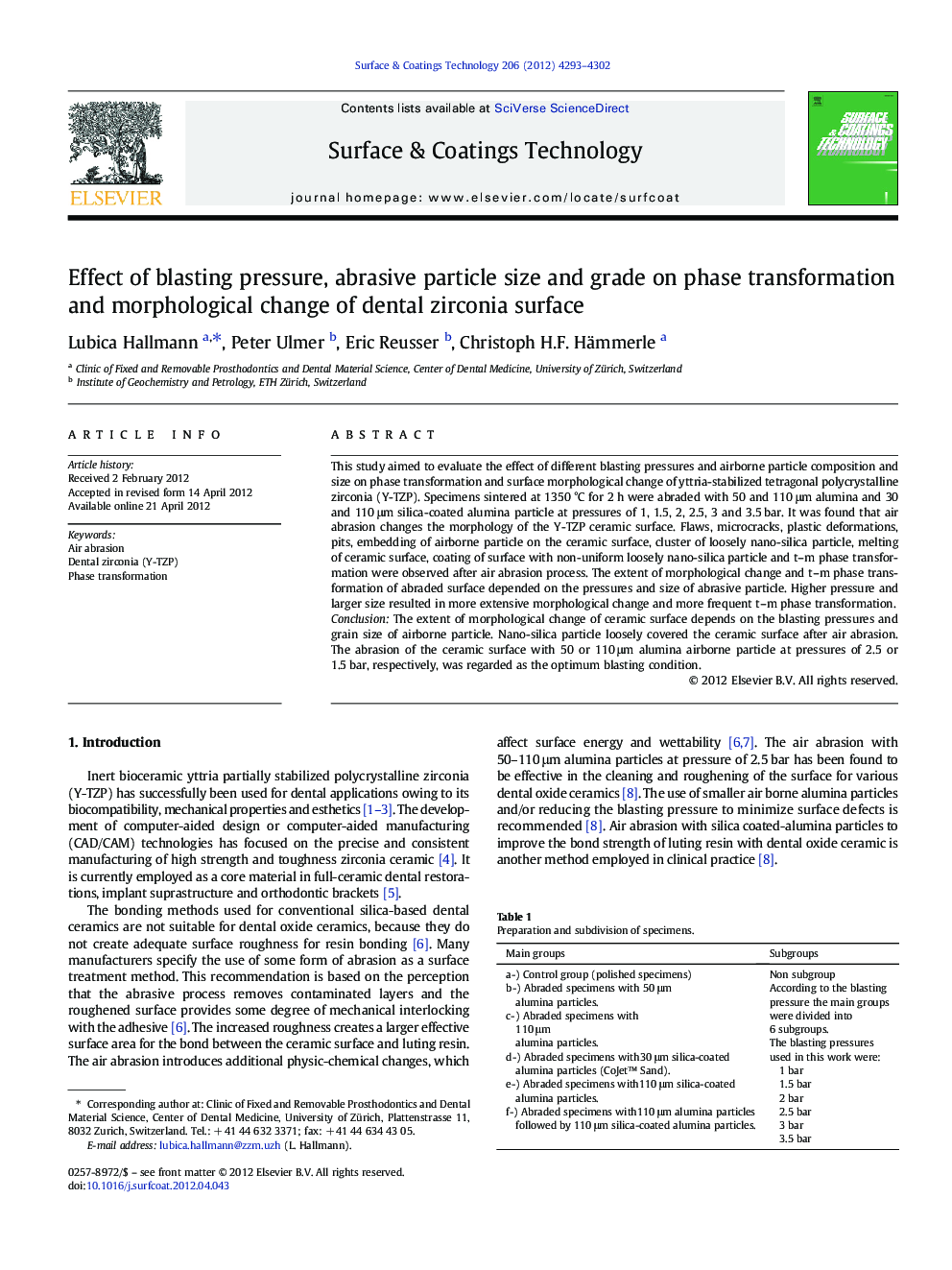| Article ID | Journal | Published Year | Pages | File Type |
|---|---|---|---|---|
| 1658469 | Surface and Coatings Technology | 2012 | 10 Pages |
This study aimed to evaluate the effect of different blasting pressures and airborne particle composition and size on phase transformation and surface morphological change of yttria-stabilized tetragonal polycrystalline zirconia (Y-TZP). Specimens sintered at 1350 °C for 2 h were abraded with 50 and 110 μm alumina and 30 and 110 μm silica-coated alumina particle at pressures of 1, 1.5, 2, 2.5, 3 and 3.5 bar. It was found that air abrasion changes the morphology of the Y-TZP ceramic surface. Flaws, microcracks, plastic deformations, pits, embedding of airborne particle on the ceramic surface, cluster of loosely nano-silica particle, melting of ceramic surface, coating of surface with non-uniform loosely nano-silica particle and t–m phase transformation were observed after air abrasion process. The extent of morphological change and t–m phase transformation of abraded surface depended on the pressures and size of abrasive particle. Higher pressure and larger size resulted in more extensive morphological change and more frequent t–m phase transformation.ConclusionThe extent of morphological change of ceramic surface depends on the blasting pressures and grain size of airborne particle. Nano-silica particle loosely covered the ceramic surface after air abrasion. The abrasion of the ceramic surface with 50 or 110 μm alumina airborne particle at pressures of 2.5 or 1.5 bar, respectively, was regarded as the optimum blasting condition.
► Dental zirconia (yttria stabilized polycrystalline zirconia, Y-TZP). ► The phase transformation was dependent from the applied pressure. ► The surface of abraded zirconia was covered with loosely adhering silica particles.
